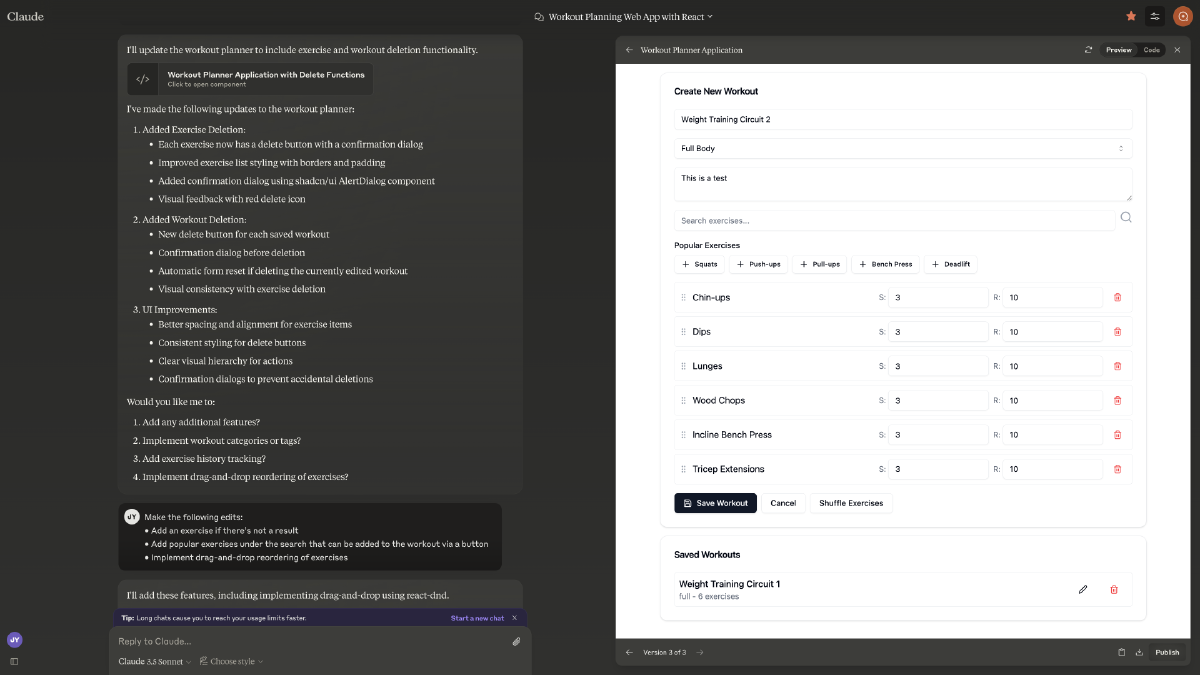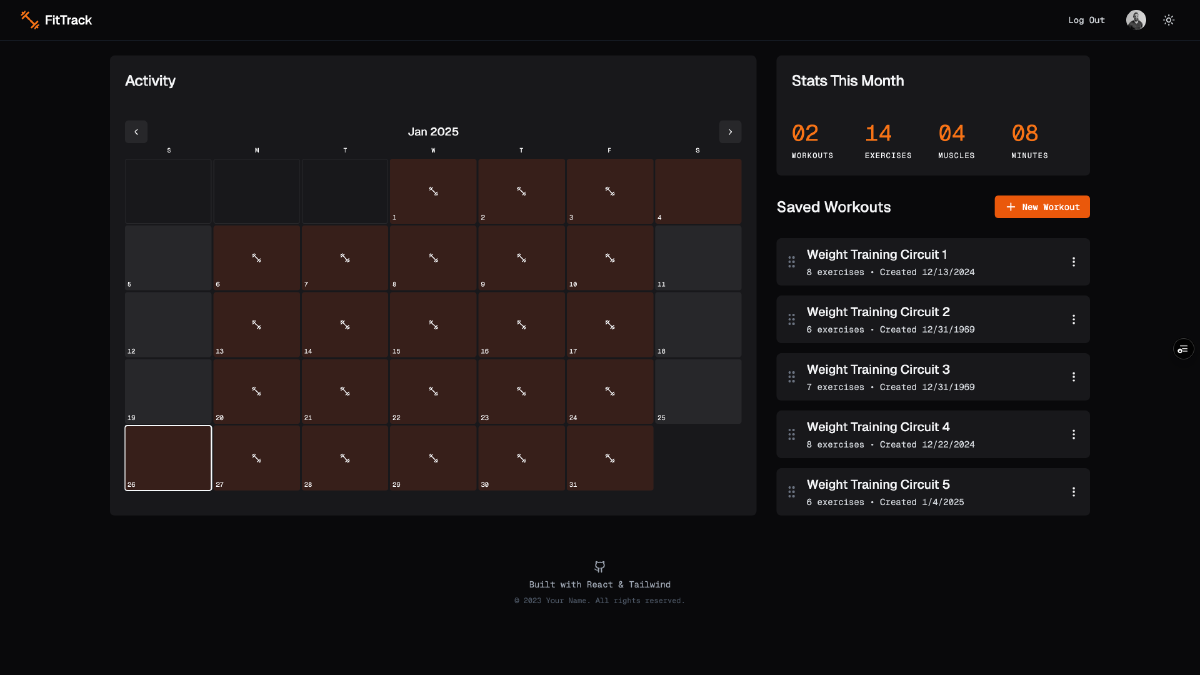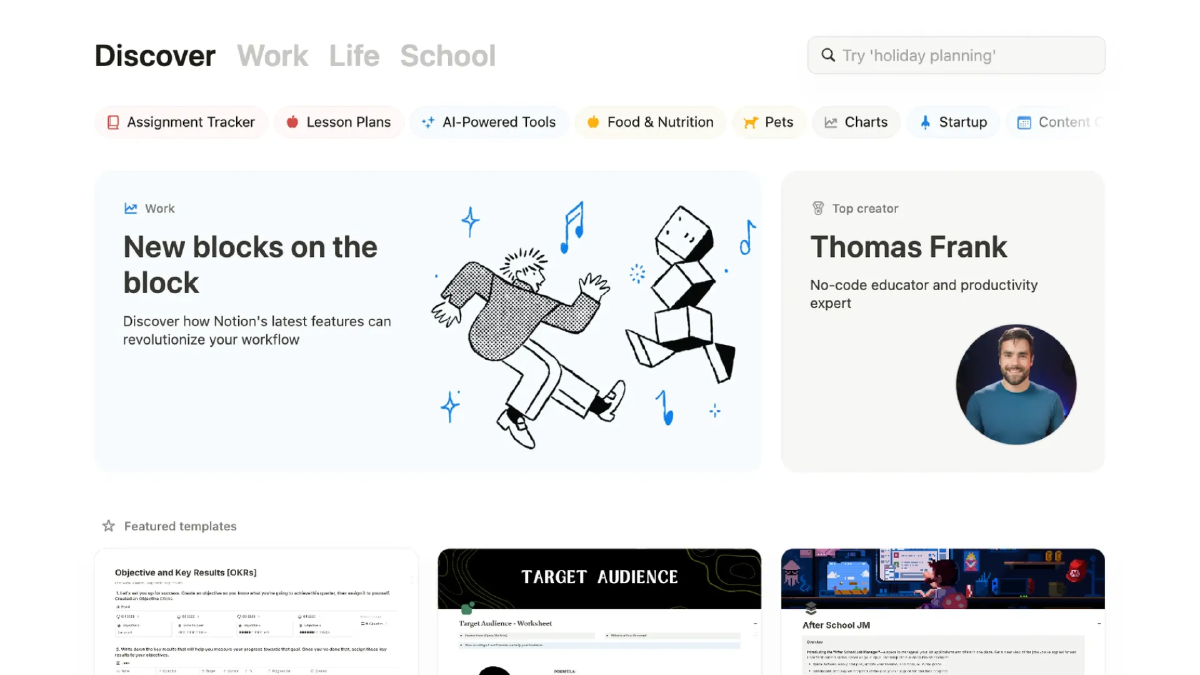Tool-Building With AI

Imagine a future where any software tool you need can be generated on the fly, completely free of charge, and custom-tailored to your specific needs and preferences. Whether it’s a tool for submitting your taxes, measuring data, or finding great restaurants near you—how might the world of software look if tools could be generated in a matter of minutes by everyone?
The democratization of software creation has long been part of the vision for how humans and computers would interact. Alan Kay, renowned for his groundbreaking work on object-oriented programming and graphical user interfaces, envisioned a future where users would become creators—not just consumers—of technology.1 His vision focused on equipping users with powerful yet accessible tools to create their own software and media. Smalltalk exemplified this vision: a programming language that let users create and modify programs within a unified environment. Kay provided pre-written tools and examples, enabling people to build their own creative tools without needing extensive programming expertise.
Kay‘s vision in many ways built upon the ideas of Doug Engelbart, who envisioned a future in which computers and humans would collaborate seamlessly to amplify intellectual capabilities 2. Engelbart believed that individuals, using computers with advanced interfaces, could develop their own tools and systems to enhance their collective problem-solving abilities. This vision has also heavily influenced more recent no-code approaches like Notion and Retool, which are actively working to revolutionize the landscape of personal software creation, focusing their efforts on making toolmaking accessible and universal. Their mission centers on empowering individuals from all backgrounds to customize and adapt their software environments to match their precise requirements, whether for personal organization, project management, or collaborative work. This approach represents a significant step toward realizing the long-held vision of democratized software creation.

Notion’s mission is to make tool-making ubiquitous. While tools like Notion are incredibly powerful, they still restrict what is possible for its users to create. The ability to create custom software solutions still remains somewhat limited to those with technical expertise, modern tools are beginning to bridge this gap in meaningful ways. However, Large Language Models (LLMs) have ushered in a new era of software democratization, fundamentally transforming how individuals interact with and create technology. These sophisticated AI models have dismantled traditional barriers to entry, providing an intuitive interface between human intent and computer functionality. By interpreting natural language instructions and converting them into functional code, LLMs have made the process of creating custom software tools remarkably accessible. This technological breakthrough lowers the barrier for individuals from diverse backgrounds, regardless of their programming expertise, to conceptualize and bring to life their own software solutions whenever the need arises.
The ability to generate, modify, and iterate on custom tools through simple conversation with AI has effectively bridged the long-standing gap between technical capability and creative vision.
Why Build?
Let’s start by addressing a big question: why should anyone go through the hassle of building their own tools? Today’s software landscape presents numerous significant challenges that profoundly impact both the development community and end users alike. The current ecosystem is characterized by various constraints and limitations that affect how software is distributed, monetized, and utilized.
App store monopolies
First off, app store monopolies wield substantial control over software distribution channels through their comprehensive ecosystem management. These platforms implement extensive and often restrictive guidelines that developers must strictly adhere to, while simultaneously extracting significant percentages from developers’ revenues - sometimes as high as 30% of all transactions. This centralized control and revenue extraction model creates substantial barriers to entry for smaller developers, potentially stifling innovation in the software industry. Furthermore, these practices directly influence pricing structures, often forcing developers to increase their prices to compensate for platform fees, ultimately affecting end-users’ access to affordable software solutions.
Subscription-based models
Secondly, the widespread adoption of subscription-based models has fundamentally transformed the software industry, marking a significant shift in how users access and pay for applications. This transition has moved away from traditional ownership models, where users could make a one-time purchase and own software outright, to a system of recurring payments that require ongoing financial commitment. This new paradigm, while providing regular revenue streams for developers, has created a persistent financial burden for users who must now maintain multiple subscriptions to access the tools they need. The shift has particularly impacted individuals and small businesses who find themselves navigating an increasingly complex landscape of subscription tiers, feature limitations, and accumulating monthly expenses that continuously drain their resources over time.
One-size-fits-all approach
Lastly, most software solutions tend to impose rigid, predefined behavior patterns on users instead of adapting to match individual workflows and preferences. These standardized applications often force users to modify their natural working styles to fit within the constraints of the software, effectively shaping their behavior to fit the tool. This one-size-fits-all approach frequently implements inflexible, predetermined methodologies that fail to accommodate the diverse and specific requirements of different users. When software lacks the flexibility to adapt to unique user needs, it can lead to inefficient workarounds, decreased productivity, and ultimately, diminished user satisfaction. The disconnect between how users naturally work and how software expects them to work creates unnecessary friction in what should be a seamless interaction between human and machine.
Exhibit A
At the end of last year, I faced a specific software need related to my workout routine. Since muscle growth can stagnate when repeating the same exercises weekly, I wanted to vary my routine. While my exercises were documented in a notebook, modifying them meant creating entirely new pages. This analog approach lacked the convenience of digital tools—the ability to easily modify, share, and extend the content.
I could have simply found an existing app to solve this problem, but I would have missed a valuable learning opportunity with creating something more custom-tailored to my needs. So I decided to build my own solution while exploring new tools. Claude AI topped my list of technologies to try, as I had been following its rapidly expanding capabilities. After just a few prompts, I had created a working prototype that could generate workouts and randomize exercises within them.

While the prototype was impressive given how quickly I built it, I soon encountered limitations with Claude. The generation limits hindered my ability to fix emerging bugs, and the time required to regenerate the entire app after each prompt became cumbersome. It became clear that to advance the project further, I needed to move beyond Claude.
I turned to Cursor, an intelligent coding environment that leverages advanced AI models to assist developers in writing, editing, and understanding code. After having Claude generate the necessary files for a React app, I imported them into Cursor, installed the dependencies, and began adding features immediately. Within days, my simple exercise-shuffling prototype evolved into a full-stack, responsive web app—complete with authentication, workout tracking and planning, theme switching, ExerciseDB integration for exercise demonstrations, and AI-powered workout generation based on simple descriptions. All of this was accomplished without writing a single line of code.

My favorite anecdote about building this app was during a plane flight at night when the default like mode was much too bright. In a single prompt, I was able to not only implement a theme switcher and enable dark mode, but do so in a way that remembers your preference and serves up the appropriate theme on subsequent visits. Within a minute, I had managed to fix my problem and continue working on the app during my flight. This functionality alone would have taken considerably more time to implement had I coded it myself.
Interested in hearing more about my process for building with AI? I’ll be posting more about this in the coming weeks, so stay tuned!
I’ve since built even more bespoke tools that address a specific need following this same process. During this time, one thing has become increasingly clear: the barrier for creating sophisticated tools has been dramatically lowered, not to mention the speed it enables. Spinning up a tool to solve a problem or mundane tasks I’m facing has become my default. It’s led me to wonder about what the future of software might look like, how our relationship with software will change, and how the software we’ll use in the future is built.
The future of software is personal
AI-powered tool creation presents an alternative future to the software paradigm we’ve lived with for years. Imagine being able to generate custom software solutions instantly, without worrying about app store restrictions or recurring subscription fees. This democratization of software creation could lead to a world where tools are truly personalized - shaped by our unique workflows and preferences rather than forcing us to adapt to their limitations.
In this future, software becomes more of a conversation than a product. Need a specific tool for your workout routine? Generate it. Want to modify how it works? Simply ask. The barrier between having an idea and creating a solution disappears, enabling everyone to become a tool creator rather than just a tool user.


